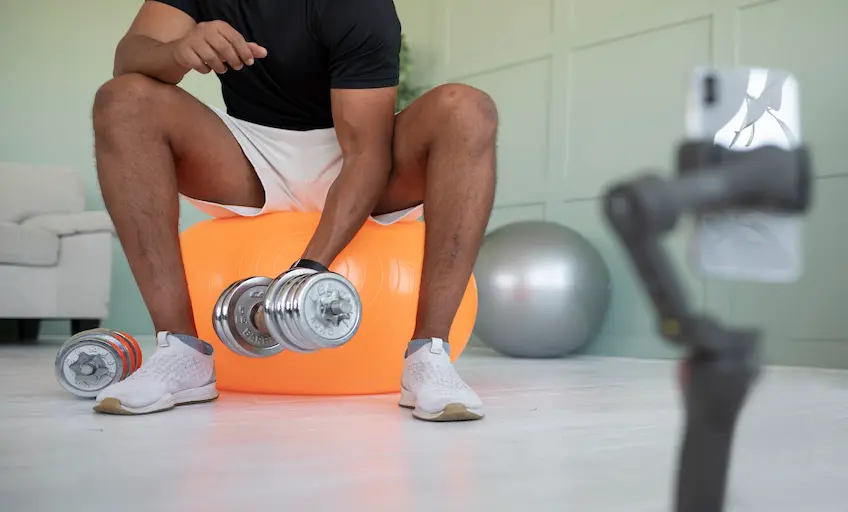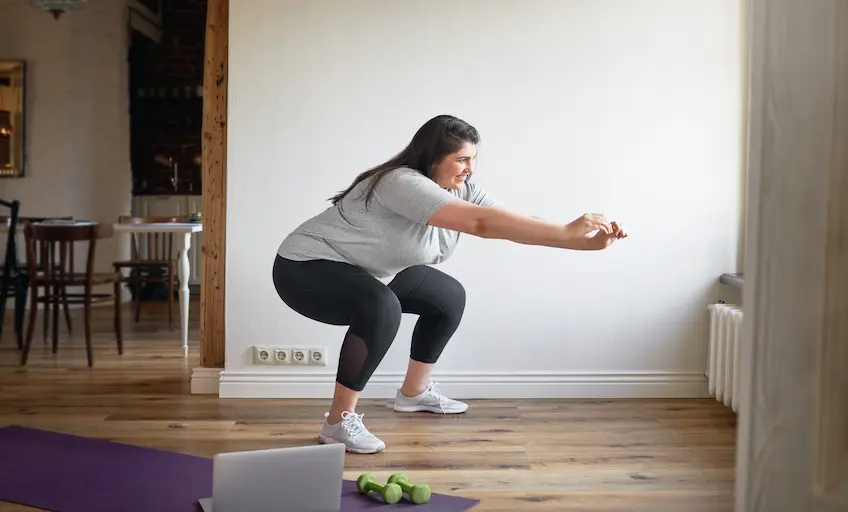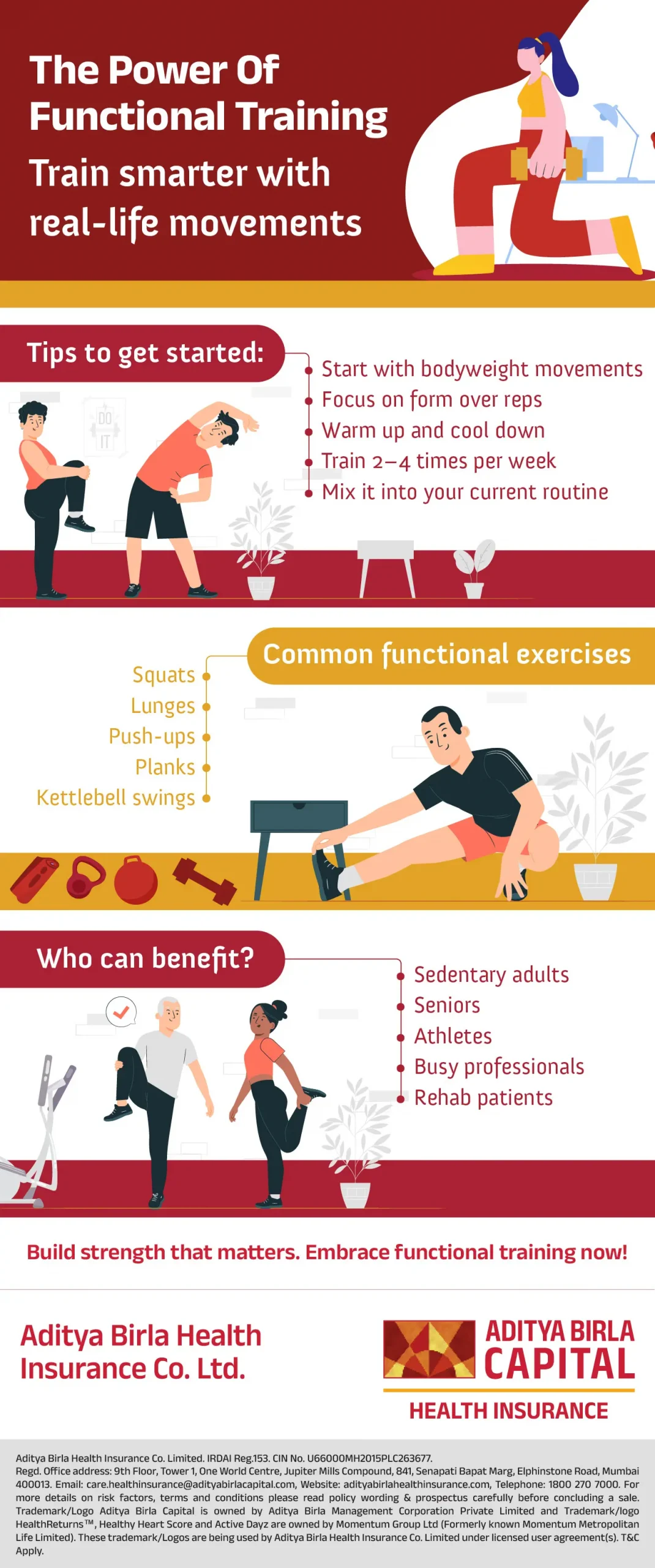
Tired of workouts that don’t translate to real life? Functional training bridges the gap between the gym and your everyday moves—think lifting groceries, climbing stairs, or chasing your toddler. It’s not just exercise; it’s training your body to move better, safer, and stronger in the real world.
What is a functional workout ?
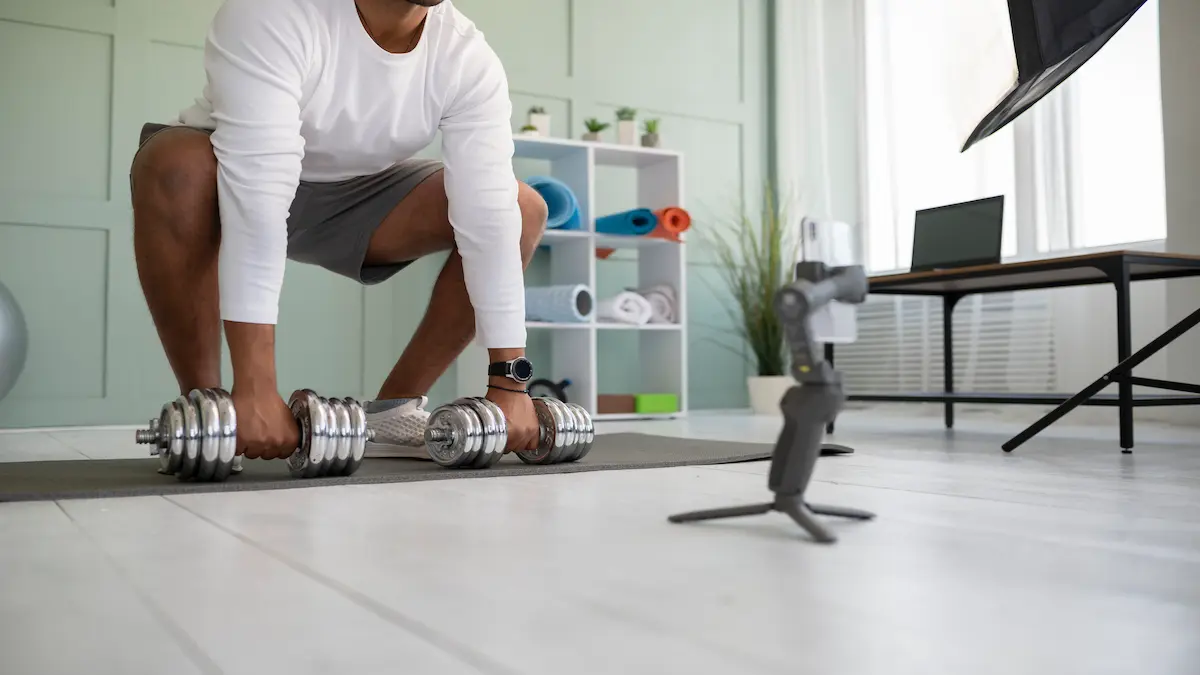
Functional training is a training style that mimics the movement patterns common in everyday life. Strength is essential when transporting heavy groceries from the car to your home or squatting down to pick something up. In a functional training workout, you’ll practice movement patterns that help you perform better both in and out of the gym. The idea is that by doing these movements regularly, you’re better prepared to perform them thanks to your workout.
Importance of functional training
Functional training isn’t just a buzzword—it’s a smarter, more practical way to prepare your body for real-life movement. Unlike isolated exercises that target a single muscle at a time, functional workouts engage multiple muscle groups, improve coordination, and enhance mobility. It’s a comprehensive approach that makes your body stronger where it matters most.
How functional training is used
Functional movements involve large groups of muscles working together across your body. Lifting a heavy object, swinging a baseball bat, or carrying groceries are real-world situations where functional training can help you improve.
While many exercises fit the definition of functional training, others do not. Less-functional strength training may have different characteristics and goals:
Workouts that target a specific body part
Non-functional exercises target only one muscle or muscle group in a specific body part. Consider the concepts of “leg day” or “arm day” at the gym. Traditional strength training exercises, such as bicep curls, calf raises, and seated leg presses, are less functional.
Focusing on the appearance of certain muscles
Many bodybuilders and non-functional exercises focus on increasing the size of specific muscles. Functional training prioritizes muscle movement over appearance.
Benefits of functional training
Functional exercises train your body to work as a whole instead of focusing on specific parts. Strengthening your entire body in this way provides numerous health benefits.
Low-impact exercises
Functional fitness is low-impact and often involves bodyweight exercises only. This makes it an excellent choice for injury rehabilitation, beginners, pregnant women, or older adults. Low-impact functional exercises include:
- Goblet squats
- Farmer’s walks
- Single-leg bridges
- Push-ups
- Lunges
These exercises, among many others, do not place stress on your joints and can be easily adjusted to suit your current capability or fitness level.
Balance and coordination improvement
Functional exercises can help preserve your sense of balance. Functional exercise enables different parts of your body to move together smoothly. This is beneficial for older adults to prevent falls and related injuries. Individuals recovering from injuries can also restore their balance through functional training.
Injury protection
Mastering the movements involved in daily life can help you avoid injury. Functional training safeguards your spine from actions that lead to back pain. By lifting heavy objects off the floor correctly during exercise, you can avoid accidents when picking up heavy items at work.
Boosts athletic performance
Athletes enhance their performance through functional exercises tailored to the movements of their sport. For example, a basketball player might practise jumping laterally to boost their agility and speed on the court. Likewise, rowers may perform squats to strengthen the same leg muscles they utilize in the boat.
Time-efficient workouts
Functional exercises may be more time-efficient for fitness and weight management than targeting one muscle at a time. Incorporating a few shorter, more intense full-body workout sessions into your routine increases the calories you burn.
Keeps training interesting
You might try functional training if you’re tired of bicep curls, sit-ups, bench presses, squats, and barbell deadlifts. Lifting weights in the gym for multiple sets and repetitions can become quite repetitive. Why not experiment with something new?
Here are some examples of unique functional exercises:
- Bear crawls
- Wall handstand push-ups
- Rope climbs
- Crab reaches
- Sled pulls/pushes
Enhances strength and power
Any activity you perform, whether in the gym or outside of it, is made easier with stronger muscles. Strong muscles are powerful—the result of strength and speed. Practising the following explosive exercises builds functional strength and enhances force production:
- Box jumps
- Lateral step-ups
- Paused squat jumps
- Heavy medicine ball throws
- Bodyweight vertical jumps
Burns fat
Functional workouts can be very high-intensity. Exercises like those mentioned above engage high-threshold muscle fibers in several major muscle groups. This has the biggest effect on your metabolic rate. You may be wondering how many calories are burned in functional training, and the answer is: a lot! The more muscles activated during a workout, the more energy is expended. The contraction of larger muscles consumes more oxygen and energy, leading to greater calorie burn.
How to incorporate functional training
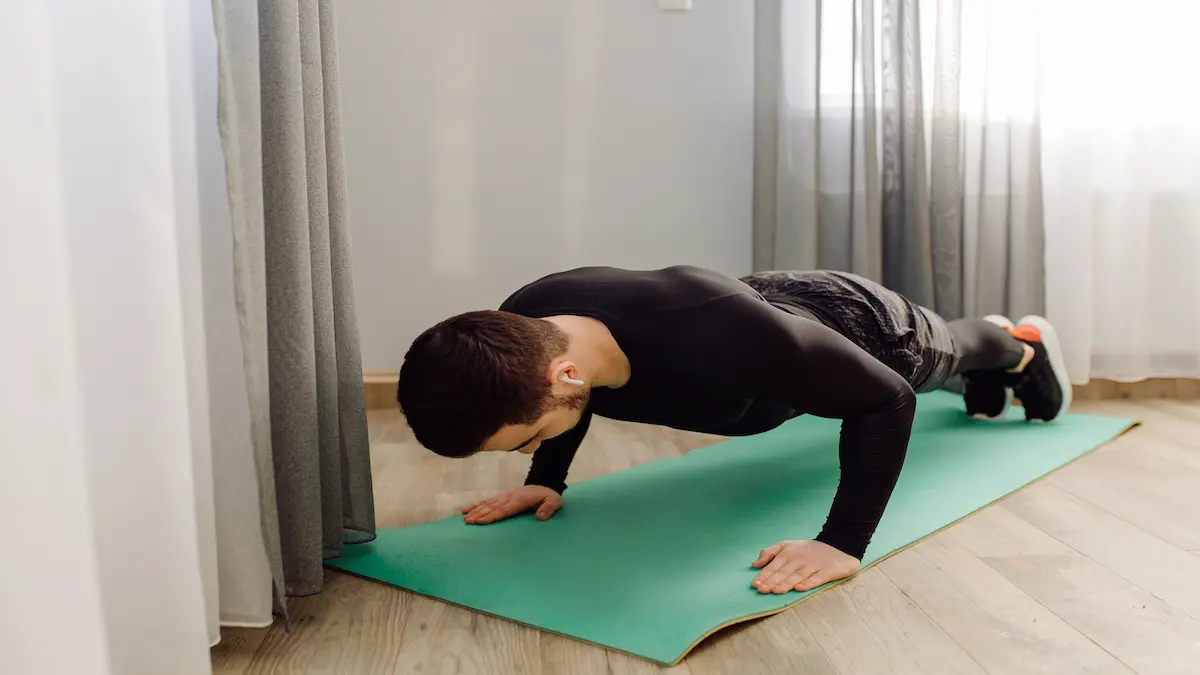
Functional workouts can vary significantly depending on muscle groups and objectives. Some popular functional exercises include:
- Push-ups
- Walking lunges
- Jump squats
- Jumping, lunging, or stepping onto an elevated surface
- Bodyweight squats
- Lateral bounds (running side to side)
- Jumping jacks
- Movements performed while balancing on one leg
All of these exercises target multiple muscles or muscle groups at a time.
How to get the most
Functional training isn’t one-size-fits-all. The benefits and drawbacks vary for each individual based on their goals, the exercises they perform, and more.
Combine it with other exercises
Different styles of exercise can assist you in achieving similar goals. Exercises that focus on just a few leg muscles can still help runners enhance their speed. Incorporate functional training along with other workout styles to boost your fitness.
Specificity matters
Chair squats are more effective than jumping jacks for helping you get up from chairs. Your proficiency in an activity improves when your functional training closely resembles it.
Be safe
Functional training may be safer than other forms of exercise, yet it still carries the risk of injury. Perform intense functional movements with proper form to maximize the benefits of your workout. Consult your doctor if you have any questions or concerns about starting a functional exercise program.
Move better, live stronger
Our bodies were designed to move, not to sit still all day. Yet, modern life keeps us desk-bound, rigid, and prone to injuries. Functional training helps reverse that damage by restoring natural movement patterns, enhancing mobility, and reawakening strength where it truly matters.
It’s not about isolating muscles; it’s about training your body to move better, feel better, and live better. Fun, beginner-friendly, and powerful, functional fitness truly reflects your overall health.
FAQs about functional training
Got questions about functional training? We’ve compiled the most common FAQs to help you understand how it works, why it’s important, and how to get started!
- What is meant by functional training?
Functional training includes exercises that simulate real-life movements to enhance strength, balance, flexibility, and coordination. It enables your body to perform daily tasks more efficiently and with a reduced risk of injury.
- Is functional training better than the gym?
It depends on your goals. Functional training emphasizes practical, full-body movements, while traditional gym workouts typically focus on isolated muscles. Functional training provides a more holistic approach to real-world strength, mobility, and injury prevention.
- Can I do functional training every day?
Yes—if balanced properly. Daily functional training is typically safe because it includes natural movements and bodyweight exercises, particularly when varied in intensity and accompanied by proper recovery.
- What are the basic principles of functional training?
Key principles include multi-joint movements, core stability, balance, flexibility, coordination, and training movement patterns instead of focusing on individual muscles. It emphasizes the quality of movement over quantity.
- How does functional training help with aging?
It promotes healthy aging by maintaining strength, enhancing balance, increasing mobility, and minimizing the risk of falls and injuries. It enables older adults to remain active, independent, and confident in their daily activities.
Key Takeaways
- Functional training is a type of exercise that resembles the movements you make daily.
- It enhances balance, coordination, athletic performance, strength, and power.
- Some functional exercises include push-ups, jump squats, and jumping jacks.
- To maximize the benefits, combine it with other exercises and prioritize specificity and safety.
Stay tuned to the Activ Living Community. Keep up to date with the latest health tips and trends through expert videos, podcasts, articles, and much more on nutrition, fitness, mindfulness, and lifestyle conditions like Asthma, Blood Pressure, Cholesterol, and Diabetes. Activ Living ke saath sahi sehat ki shuruat ABHI karo.
You may also be interested in the following blogs:
Popular Searches
How to lower blood pressure | Fruits good for liver | Unhealthy foods | Ragi Benefits | Basal Metabolic Rate | Acupressure points for High Blood Pressure | Ayurvedic medicine for blood pressure | How to control cholesterol at home | Homeopathy for Asthma | Biological Age | Home remedies for TB | Natural beta blockers | Negative effects of internet | Types of walking | Blood pressure calculator | Blood sugar calculator | BMI Calculator





 1800-270-7000
1800-270-7000

